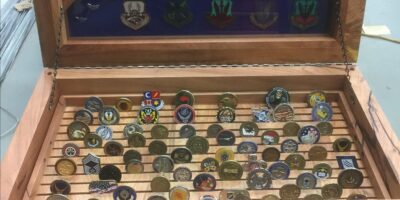Military Cushman Scooter
Military Cushman Scooter
The Military Cushman Scooter played a unique role during World War II. Known for its utility and reliability, it became an essential vehicle for the U.S. Armed Forces. Let’s delve into its history, design, and application.
History of the Military Cushman Scooter
Cushman started in the early 1900s as a Nebraska-based company specializing in engines. By the 1930s, they shifted their focus to scooters. With the onset of WWII, Cushman answered the call for military needs, leading to the creation of military-specific models.
Design and Specifications
The military versions boasted several modifications over their civilian counterparts. These designs were tailored to meet the rugged demands of wartime operations.
- Engine: A reliable single-cylinder, four-stroke engine
- Top Speed: Approximately 40 mph
- Transmission: Automatic clutch with a single-speed design
- Weight: Lightweight at around 250 pounds, making it easy to transport
- Fuel Efficiency: Impressive, with about 75 miles per gallon
Frame and Suspension
The frame was made from sturdy steel tubing. This allowed it to handle various terrains. The suspension system comprised a springer front fork and rigid rear, providing a balance between comfort and durability.
Deployment and Uses
The scooter found its place in multiple military branches. It was particularly favored for communication duties, scouting, and general transportation within bases. Paratroopers benefitted from its ease of deployment by parachute drops.
Communication Capabilities
Equipped with radios, the scooters became mobile communication hubs. They bridged gaps between units, enhancing coordination on the battlefield.
Supply and Transport
Its compact size allowed it to navigate tight spaces. This capability made it ideal for transporting supplies quickly and efficiently. It also supported reconnaissance missions, offering a low-profile means of gathering intelligence.
Post-War Transition
After the war, many military scooters were sold as surplus. They found new life in civilian hands. Cushman continued producing scooters, with many design elements influenced by the military models.
Cultural Impact
These scooters became iconic symbols of wartime innovation. They remain popular among collectors and enthusiasts.
Collectors’ Item
Today, restored military Cushman scooters are valuable antiques. They represent a piece of history, often showcased in museums and vintage shows.
Maintenance and Restoration
Maintaining a military Cushman scooter requires knowledge about both its original and modern replacement parts. Restoration often involves sourcing hard-to-find parts and meticulous work to maintain authenticity.
Parts and Resources
Enthusiast forums and specialist suppliers offer advice and components. Manuals and historical documents provide essential specifications and instructions.
Restoration Community
Restorers form tight-knit communities, often sharing tips and showcasing their projects online and at meet-ups.
Legacy and Significance
The military Cushman scooter represents innovation and adaptability. Its role during WWII showcases the importance of versatile, reliable vehicles in military history. The scooter’s legacy endures through its continued presence among collectors and history enthusiasts.
